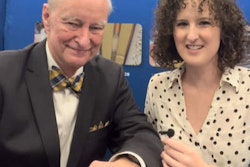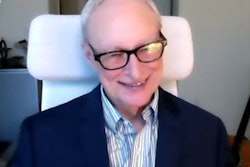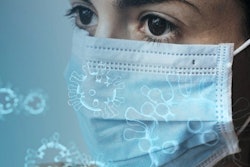
For nearly 30 years, dentists have successfully used laser technology to solve myriad dental problems. Nevertheless, misconceptions about this technology remain. Here's my response to three of the most prevailing myths today.
Myth No. 1: All lasers are created equal.
 Dr. Samuel Low
Dr. Samuel LowMany people believe that all dental lasers work the same way on oral tissues. The fact is, laser action is highly dependent on the respective wavelength and settings, such as power and pulse. Further, there are soft-tissue lasers and all-tissue lasers, which work effectively on both soft tissue and teeth and bone.
Without an understanding of the physics of lasers -- and receiving the appropriate training -- practitioners may purchase a laser that generates a suboptimal result. This generally occurs when the wavelength of the dental laser is not appropriate for the target tissue. The dental professional may reason that the device is causing the suboptimal result when it may be due to inappropriate wavelength, technique, and settings.
To avoid these problems, discerning and knowledgeable practitioners need to decide on the type of dental laser they want to purchase and use based on the procedures they incorporate into their practice. When the technology and appropriate wavelength are correctly matched to the procedure, laser dentistry is a fast, safe, and effective form of oral care -- a state-of-the-art technology that can be used successfully in a variety of procedures.
One of the most important benefits for the patient is that precision laser dentistry is minimally invasive and generally painless, offering the highest levels of comfort, less postoperative pain, and accelerated healing. By educating patients about these significant benefits, practitioners can help them overcome a significant roadblock to sound oral care: the fear and pain commonly associated with dentistry.
Myth No. 2: Dental lasers are limited in scope.
Many dental professionals who may not be aware of the comprehensive attributes of lasers believe that the technology is limited to a few procedures, such as a gingivectomy or biopsy. Certainly, diode lasers can perform these procedures with minimal to no hemorrhaging and excellent postoperative healing. But the scope of dental lasers offers much more.
Diode soft-tissue lasers, for example, are excellent for troughing around crown preparations (without requiring a retraction cord). Additionally, they can perform frenectomies, crown lengthening (respecting biologic width), and nonsurgical periodontal procedures such as laser bacterial reduction and curettage, oral ulcer management, and the desensitization of teeth.
Taking into consideration all tissue lasers, the versatility of the erbium, chromium-doped yttrium, scandium, gallium, and garnet (Er,Cr:YSGG) laser allows for the preparation of teeth from class I to V, with minimal to no local anesthesia needed, depending on the patient's condition. Since these lasers have an affinity for hydroxyapatite and water, we can now perform surgical periodontal procedures that include the alteration of bony topography and gingivae.
What's more, zirconium veneers and crowns can be removed easily without cutting the materials. And titanium implant surfaces can be decontaminated when we encounter peri-implantitis.
Myth No. 3: Dental lasers are too expensive.
Many providers across the U.S. have already integrated laser dental technology into their practice and benefited from the robust return on investment. They are reporting increased revenue by providing what today's patients want and even expect: the highest caliber of clinical care. Dental laser technology not only is effective in a variety of procedures but also reduces treatment time while improving patient comfort.
Providers who rely solely on traditional methodologies are missing out on the value-added revenue that lasers generate. With a fully integrated laser practice, providers can perform multiple and varied procedures in one visit and essentially eliminate the need for cumbersome follow-up visits (for example, gingivectomy and class V in one setting).
With fewer follow-up visits, patients can return to their day-to-day activities without interruption, and providers can see more patients each day. Minimizing the need for follow-up visits is also especially relevant as the COVID-19 pandemic continues, relieving patients of their concerns of exposure over multiple office visits.
Since most procedures today can be augmented by laser technology, dentists can provide more comprehensive care in-house, which can help grow their practice. As patients become more aware of, and familiar with, medical technology, it's not surprising that they are expecting the same in dentistry. In fact, dental laser technology can attract new patients, and it can convey a sense of high-tech, high-quality treatment for existing patients.
It's no secret, therefore, that dental lasers are the future of dentistry, as they radically improve patient satisfaction and boost revenue for practitioners.
Dr. Samuel Low was named vice president, dental and clinical affairs, and chief dental officer of Biolase in October 2016. Low is a professor emeritus at the University of Florida College of Dentistry and associate faculty member of the Pankey Institute. He has 30 years of private practice experience in periodontics, lasers, and implant placement. He is also a diplomate of the American Board of Periodontology and past president of the American Academy of Periodontology.
The comments and observations expressed herein do not necessarily reflect the opinions of DrBicuspid.com, nor should they be construed as an endorsement or admonishment of any particular idea, vendor, or organization.



















